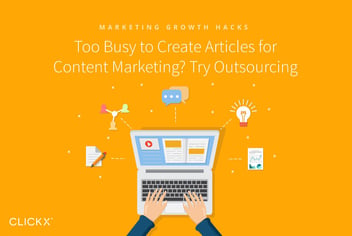Inbound vs. Outbound: A Complete Guide for Agency Owners
.webp?width=1280&height=720&name=Copia-de-Copia-de-Copia-de-Copia-de-Copia-de-Copia%20(8).webp)
The marketing world has evolved over the last few years.
One of the biggest changes has been the rise of inbound marketing.
Inbound is a more holistic, customer-centric approach that focuses on attracting customers through quality content and helpful interactions.
Outbound, on the other hand, is more traditional and relies on ads, cold calls, and other forms of push marketing.
Which one should you choose for your agency?
Let’s take a closer look.
What Is Inbound Marketing?
Inbound is a marketing methodology that focuses on earning your customer’s attention by producing helpful content.
It includes blogging, social media, video marketing, email marketing, SEO, content marketing, and web design.
.webp?width=560&height=388&name=Copia-de-Copia-de-Copia-de-Copia-de-Copia-de-Copia%20(9).webp)
Inbound looks to attract prospects with helpful resources that are educational and actionable, and it encourages customers to seek you out, rather than you going after them.
For example, imagine you’re a dentist and you want to attract new patients.
Traditionally, you would buy ad space on Google, Facebook, and other outlets to push your message out.
Inbound, on the other hand, focuses on learning what your clients might want and producing helpful resources that help them achieve it.
You could create content that shows people how to achieve whiter teeth, for example. You could also host events to get in touch with your target market, or you might offer free cosmetic consultations to get people into your practice.
The bottom line is that inbound is about earning the trust of your customers and building a community around your brand.
What Is Outbound Marketing?
Outbound marketing is the more traditional approach to marketing.
It involves pushing your message out through cold calls, direct mail, and other methods of advertising.
.webp?width=560&height=388&name=Copia-de-Copia-de-Copia-de-Copia-de-Copia-de-Copia%20(10).webp)
It relies on a top-down approach, meaning you will need to rely on your sales team or other avenues to get the message out.
For example, imagine you want to get more clients for your agency.
You might buy ads on Google and Facebook, but you could also buy billboards, send direct mailers to potential clients, or you might even do cold calls.
These are all examples of outbound marketing techniques.
In short, outbound is more of a “spray and pray” approach, since you’re basically throwing everything out there to try to capture your target market.
But that doesn’t mean it doesn’t work.
If you’re willing to put in the time and effort, there’s no denying that outbound is an effective way to get the word out.
What Are the Pros and Cons of Inbound Marketing?
Now that you understand what each approach is, it’s time to look at the pros and cons of inbound marketing.
Let’s start with the pros:
- More qualified prospects: With inbound marketing, you’re attracting prospects that are already interested in your product. After all, they’re contacting you, and not the other way around.
- Reduced ad costs: When you use inbound, you don’t need to shell out as much on paid ads.
- Increased trust: If you’re using helpful content to attract customers, they will be more likely to trust your agency.
- A more personalized approach: When you’re producing content that’s targeted to your audience, it’s easier for your agency to connect on a more personal level.
- More effective lead scoring: With inbound, you can use the content you put out to get a better idea of who your ideal customer is. Because of this, you can establish a better lead scoring system to predict which clients will stay with you long-term.
While these benefits can definitely outweigh the cons, there are still a few downsides to consider:
- Requires more effort: To be successful with inbound marketing, you need to put a lot of time and effort into creating high-quality content.
- Requires a solid strategy: Inbound marketing relies on a more organic approach, and there’s no telling how long it will take before you start seeing results.
- Slower results: For many companies, inbound marketing can be a slow way to attract leads.
What Are the Pros and Cons of Outbound Marketing?
Now, let’s look at the pros and cons of outbound marketing.
Pros:
- Immediate results: With outbound, you know right away if your ads are actually working, so you can quickly adjust your strategy to get better results.
- More control: When you’re using outbound, you know exactly how much it will cost to attract and convert new leads. Because of this, it’s easier to predict how your agency will perform in the future.
- Versatility: Outbound marketing can be used in a variety of ways, depending on your company’s skills and resources.
- Scalability: Outbound marketing is a scalable method of marketing, meaning you can hire more salespeople or spend more money on ads as your company grows.
Cons:
- More expensive: Since you’re reaching out to strangers that aren’t necessarily interested in what you have to offer, this approach can be a lot more expensive.
- Higher risk of wasting money: Outbound marketing involves a lot of trial and error, so there’s no telling how long it will take before you start seeing results.
- More initial friction: If you’re doing cold calls or sending out direct mailers, you can expect some resistance from the people you contact.
What Are the Main Differences Between Inbound and Outbound?
Now that you have a better understanding of inbound vs. outbound, let’s take a closer look at the main differences between the two.
.webp?width=560&height=388&name=Copia-de-Copia-de-Copia-de-Copia-de-Copia-de-Copia%20(11).webp)
Difference 1: Focus
While inbound focuses on solving customers’ problems, outbound aims to sell them something.
Inbound marketing typically involves content that is helpful to people, where they can read about how to solve their issues or discover new ideas.
On the other hand, outbound marketing is more of a sales and lead generation tactic where you reach out to new users and make the sale.
Difference 2: Cost
Inbound marketing is typically cheaper to use, but it also requires more legwork and time before results can be seen.
With outbound, you can pay to have the leads delivered to you, but your conversion rates are likely to be lower.
Difference 3: Trust
Inbound marketing is all about establishing trust with your audience.
By solving their problems and answering common questions, you start creating a relationship with your prospects and making them more likely to purchase from you.
Outbound marketing typically involves selling first and creating trust second, so there’s more of an emphasis on “closing” your sales.
Difference 4: Strategy
Inbound takes a holistic approach that touches all aspects of your marketing efforts, such as blogging and social media.
Outbound is more linear and typically involves a more defined and direct strategy.
Difference 5: Control
You have less control over your inbound leads because they’re coming through organic efforts.
For outbound, you can pinpoint your exact target audience and design a custom message that speaks directly to them.
Inbound vs. Outbound: Which One Is Better?
At this point, you already understand the difference between inbound and outbound marketing, but does that mean you should only focus on one or the other?
The answer is no.
Both inbound and outbound marketing have their own set of benefits. By combining both together, you can create a highly effective marketing strategy that helps you see results in both the short-term and long term.
By using inbound marketing to attract leads, you’ll be able to lower your costs while building trust with your prospects, which will lead to a larger quantity of sales in the future.
At the same time, you’ll also want to use outbound marketing to increase your lead flow, so you can take advantage of inbound benefits while still enjoying the immediate results that come from outbound.
For example, if you want to attract new leads using inbound, you could create helpful blog posts that showcase how your agency solved past client problems.
Then, to further develop leads with inbound, you could offer a free white paper on the topic that they found interesting.
To guarantee that your leads convert into actual clients, you can top it all off by sending them a complimentary gift that shows how much you value their business.
To complete your outbound strategy, you could run a retargeting campaign to remind these new leads about your agency and show them other useful content you’ve created.
This way, you can maximize both inbound and outbound efforts to lower the costs of attracting new leads, while also increasing the number of sales you make in the future.
Conclusion
If you’re struggling to see results with your marketing efforts, it may be because you haven’t been using the right mix of inbound and outbound.
By combining both strategies into one cohesive plan, you can lower costs while also increasing sales over time.
At the end of the day, inbound and outbound marketing are both incredibly valuable.
Hopefully, the information outlined in this guide will help you find the perfect mix that will grow your agency.



